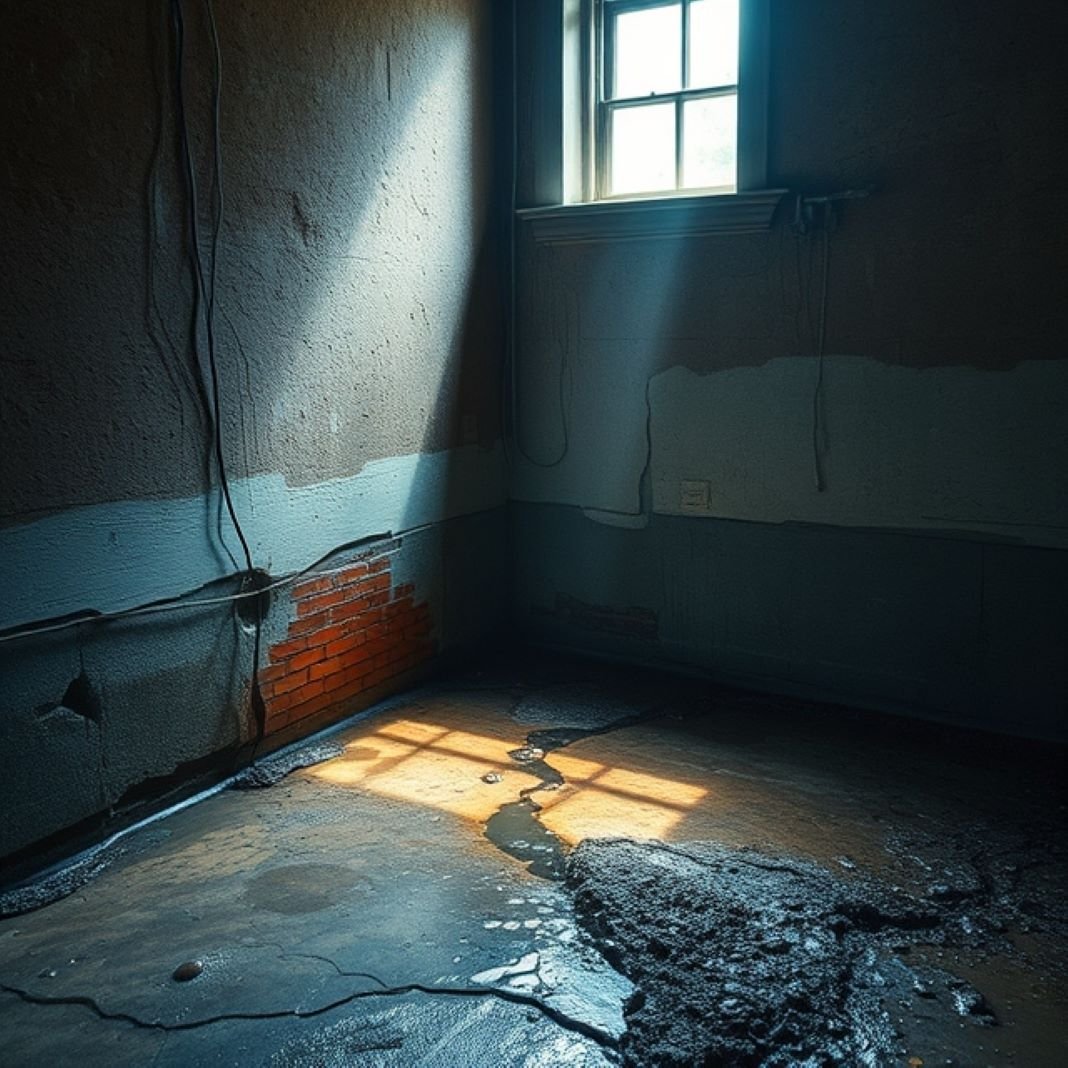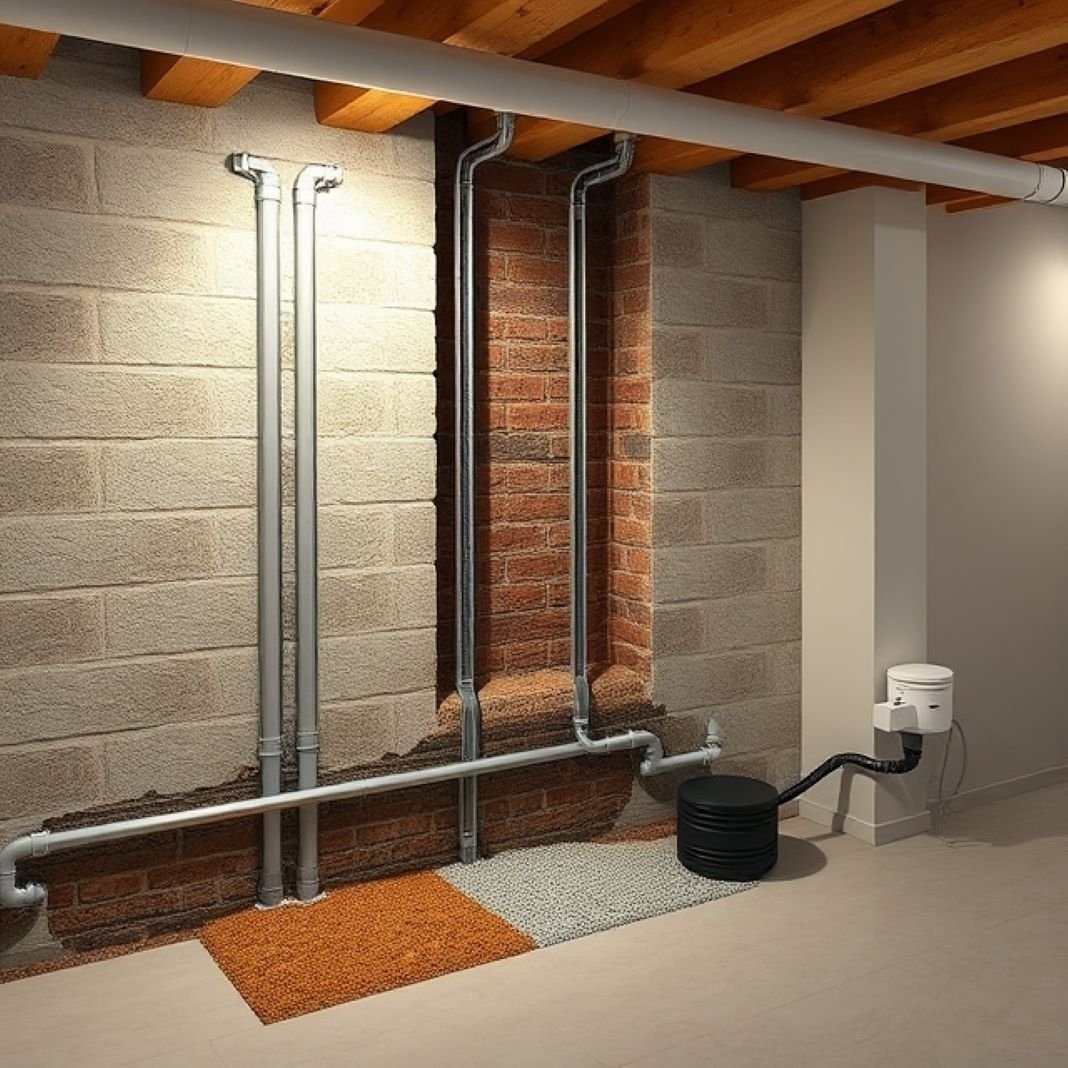Here's What We Have Covered In This Article
What Causes Basement Flooding?
Basement flooding can occur for several reasons, often tied to weather conditions, home design, and maintenance issues. Understanding the root causes can help you take the right steps to protect your home.
- Excessive Groundwater: When the water table rises due to heavy rain or melting snow, water pressure can build up around your home. This can lead to seepage through cracks or weak points in your basement walls or floor.
- Surface Water Inflow: If your home sits downhill or on uneven terrain, rainwater can accumulate and flow toward your foundation. Poor grading or clogged gutters exacerbate the problem, allowing water to enter through doors, windows, or basement vents.
- Sewer Backups: Overloaded or blocked sewer systems during heavy rainfall can cause wastewater to backflow into your home. This is especially common in older neighborhoods with aging infrastructure.
Facts To Understand:
Economic Impact: Flooding causes annual economic losses in the U.S. ranging from $180 billion to $496 billion, equivalent to 1% to 2% of the nation’s Gross Domestic Product (GDP).
Health Impact: Severe flooding is associated with increased hospitalization rates for various health conditions. A nationwide study analyzing Medicare records from 2000 to 2016 found that during and up to four weeks after severe flood exposure, there was a 3.5% increase in hospitalizations for nervous system diseases, a 3.4% increase for skin and subcutaneous tissue diseases, and a 1.5% increase for injuries and poisoning.
Risks of Basement Flooding
A flooded basement isn’t just inconvenient—it poses several serious risks to your property and health.
Potential Property Damage: Flooding can ruin floors, walls, furniture, and electrical systems. Repairing or replacing these items can be costly.
Risk of Mold and Mildew: Standing water and damp conditions create the perfect environment for mold and mildew to thrive. These can affect air quality and cause respiratory issues for your family.
Impact on Structural Integrity: Water infiltration can weaken your home’s foundation over time, leading to cracks, bowing walls, and other structural issues.
Fast Plumbing Repairs in Your Neighborhood
Serving homes and businesses across Hazel Dell, Vancouver, Portland, and surrounding areas, our expert plumbers are ready to handle any issue. Contact us for fast, dependable service today!
Preventing Basement Flooding: Exterior Solutions
Addressing exterior vulnerabilities is a key step in keeping your basement dry during heavy rains.
Seal Foundation Cracks and Holes: Inspect your foundation for any gaps or cracks and use waterproof sealants to close them. This prevents water from seeping through weak points.
Ensure Proper Drainage from Downspouts and Gutters: Keep gutters and downspouts clear of debris so they can effectively direct rainwater at least six feet away from your home’s foundation.
Grade Soil Away from the House: The ground around your home should slope downward to prevent water from pooling near the foundation.
Install Porous Surfaces or Gravel Paths: Replace solid driveways or walkways with materials that allow water to absorb into the ground, like gravel, shingle, or porous pavers.
Preventing Basement Flooding: Interior Solutions
In addition to exterior fixes, interior solutions are essential to flood-proof your basement.
Install and Maintain Sump Pumps: A sump pump removes water that collects in your basement. Regular maintenance ensures it operates efficiently, even during power outages (with a battery backup).
Use Waterproofing Compounds on Basement Walls: Apply sealants or waterproof coatings to walls and floors to minimize seepage and keep moisture out.
Protect Pipes from Freezing: Keep your thermostat set to at least 59°F (15°C) during colder months and open cabinet doors to allow warm air to circulate around pipes.
Keep Plumbing Systems Clean and Functional: Avoid clogs by not flushing anything other than toilet paper and waste. Regularly maintain your water heater and lateral drain to ensure proper flow.
Plumbing Upgrades for Homes and Businesses
From water heaters to trenchless solutions, we serve communities like Hazel Dell, Salmon Creek, Vancouver, and Portland. Upgrade your system with our expert team—get a free quote now!
The Role of Drainage Systems
Effective drainage systems are the backbone of basement flood prevention. They manage water flow and ensure it is safely diverted away from your home.
Explanation of Cavity Drainage Systems:
A cavity drainage system creates a controlled pathway for water that seeps into your basement. These systems consist of a waterproof membrane with small cavities that guide water toward a drainage channel. From there, water is directed to a sump pump for removal. This setup is ideal for homes in areas with high water tables or prone to heavy rain, as it relies on water management rather than just blocking moisture.How Sump Pumps and Drainage Channels Work:
Sump pumps collect water from drainage channels and pump it out of your home to a safe discharge location. The drainage channels are installed along the basement perimeter to capture water efficiently. Together, these components ensure any water entering your basement is promptly removed, keeping the area dry and usable.
Steps to Flood-Proof Your Basement
Flood-proofing your basement requires proactive steps to address potential weak points and ensure water does not accumulate inside.
Conduct a Home Inspection:
Regularly inspect your home’s foundation, walls, and floors for cracks or signs of moisture. Pay attention to window wells, doors, and any areas where water might enter. Identifying issues early can save significant repair costs.Hire Professionals for Waterproofing:
While some waterproofing tasks can be DIY, major solutions like installing cavity drainage systems or sump pumps should be handled by experts. A professional will ensure the job is done correctly and meets safety standards.Maintain Drainage Systems Regularly:
Check your gutters, downspouts, and sump pumps at least twice a year to ensure they are functioning properly. Clean out debris and make repairs as needed to keep water flowing away from your home.
Long-Term Maintenance Tips
Ongoing maintenance is key to preventing basement flooding, even after installing protective measures.
Schedule Regular Inspections of Sump Pumps and Drainage Systems:
Have your sump pump and drainage system inspected annually to ensure they are free from blockages or damage. Early detection of issues can prevent costly flooding later.Clear Gutters and Downspouts Frequently:
Leaves, dirt, and debris can clog gutters and downspouts, causing water to overflow and pool near your foundation. Regular cleaning keeps them functioning properly.Keep Valuables Safe in Waterproof Containers:
Store important documents, family keepsakes, and other valuables in waterproof, airtight containers. Place these containers on higher shelves or an upper floor to ensure they stay safe during any unforeseen water issues.
FAQs About Turning Off Water During Plumbing Emergencies
How do I turn off the water for plumbing repairs?
To turn off water for repairs, locate the shut-off valve for the specific fixture. For sinks, this valve is usually under the sink, connected to the supply lines. Toilets have a small valve near the base of the toilet, while appliances like dishwashers have valves close to the water supply line. Turn the valve clockwise to stop water flow. If you’re working on a larger repair or can’t find the fixture valve, shut off the main water supply instead.
How do you turn off water when pipes burst?
If a pipe bursts, act fast to prevent flooding. Locate the main water shut-off valve, which is usually near your water meter or where the water supply enters your home. Turn the valve clockwise to stop the flow of water entirely. After shutting off the water, drain the pipes by turning on all the taps in your home. This will relieve pressure and reduce the amount of water leaking from the damaged pipe.
Where is the emergency shut-off valve located?
The main shut-off valve is typically found in one of the following locations:
- In the basement near the foundation.
- Inside a utility room or garage.
- On an exterior wall, close to where the water line enters your home.
- Outside near the water meter box (common in warmer climates).
Familiarise yourself with its location before an emergency occurs, and make sure everyone in your household knows where it is.
How do I turn off the water to my house and drain pipes?
To turn off water to your entire house, locate the main shut-off valve and turn it clockwise until it stops. Once the water is off, open all taps—starting with the ones on the top floors and working your way down. This allows the pipes to drain completely, relieving pressure and reducing the risk of further leaks. Remember to turn off your water heater as well to avoid damage to the system.
Keep Your Plumbing in Top Shape with Expert Maintenance
Our maintenance services cover areas within a 25-mile radius of Hazel Dell, including Vancouver, Battle Ground, and Portland. Schedule a visit today and prevent costly breakdowns.





